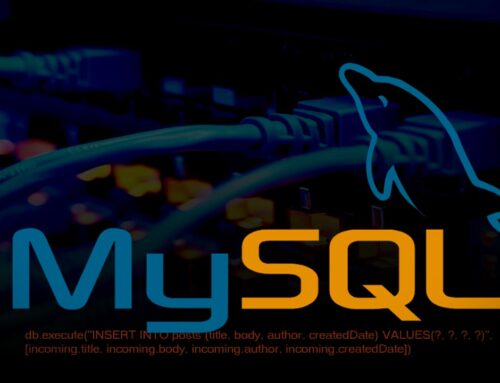In an increasingly volatile, uncertain, complex, and ambiguous world, the ability to make well-informed and timely decisions under pressure has become a crucial competence for individuals across various fields. Whether it’s in the realms of business, healthcare, military, or in everyday life, we are frequently confronted with situations that necessitate swift and strategic decision-making. However, the pressure and stress that often accompany such situations can easily skew our judgment, leading to flawed decisions that have far-reaching consequences.
This article explores the intricacies of decision-making under pressure, delving into various theories, strategies, and tools that can help individuals make better decisions in high-stakes situations. As you journey through this piece, you will gain insights into why people often falter under pressure, the psychological and physiological aspects of stress, and how it affects decision-making. Additionally, we will outline proven methods and strategies that can help individuals remain calm and composed in high-pressure environments, ensuring they make optimal decisions.
By the end of this article, you should have a better understanding of how pressure affects your decision-making ability and how to master decision-making under pressure. This knowledge will not only improve your professional performance but also enhance your personal life. With the right tools, mindset, and strategies, you can thrive in high-pressure environments, make informed decisions, and achieve your desired outcomes.
Table of Contents
- Understanding Decision-Making Under Pressure
- The Role of Stress in Decision-Making
- Tools and Techniques for Decision-Making Under Pressure
- Case Studies
- Wrapping Up
Understanding Decision-Making Under Pressure
Decision-making is a cognitive process that involves selecting a course of action from various alternatives to achieve a specific goal. In a calm, controlled environment, this process can be relatively straightforward. However, when we introduce pressure into the equation, things become more complicated.
Pressure can arise from various sources, including tight deadlines, high stakes, unpredictability, public scrutiny, and competition. Under pressure, our perception of time changes, and we often feel like we don’t have enough of it. Our focus narrows, and we’re more likely to overlook critical information or options. We may also experience heightened emotional responses that cloud our judgment. Hence, decision-making under pressure is inherently more challenging than decision-making in a low-pressure context.
It’s also worth noting that the pressure doesn’t always lead to poor decisions. Research has shown that a moderate amount of stress can actually enhance performance – a phenomenon known as the Yerkes-Dodson law. However, beyond a certain point, the pressure becomes overwhelming and performance declines. It’s crucial, therefore, to find the ‘sweet spot’ where pressure improves performance without causing distress or impairing judgment.
Moreover, the way we perceive pressure significantly influences our decision-making performance. Research has shown that people who see stress as a challenge, rather than a threat, are more likely to make better decisions under pressure. These individuals have a ‘challenge mindset’, which enables them to maintain focus, stay motivated, and think more clearly under pressure.
This understanding of decision-making under pressure lays the foundation for the strategies and tools we’ll discuss later. By recognizing the effects of pressure, we can better prepare ourselves to navigate high-pressure situations and make optimal decisions.
The Role of Stress in Decision-Making
Stress is an inherent part of our lives and plays a significant role in how we make decisions, especially when under pressure. When we perceive a situation as stressful, our body responds with a series of physiological changes often referred to as the “fight or flight” response. This response is intended to help us react quickly in threatening situations.
However, these biological reactions can often interfere with our ability to make sound decisions. High stress levels can influence our decision-making in several ways, including altering our perception of risk and reward, increasing impulsivity, and affecting our memory.
Altered Perception of Risk and Reward
Under stress, people’s perception of risk and reward can become distorted. A study by Porcelli and Delgado (2009) found that acute stress significantly influences financial decision-making, with stressed individuals tending to become more risk-averse in the gain domain and more risk-seeking in the loss domain.
Increased Impulsivity
High stress levels can lead to impulsivity, which in turn can result in hasty, ill-considered decisions. A study by Starcke, Wolf, Markowitsch, and Brand (2008) suggested that individuals under stress tend to make more impulsive choices, favoring immediate rewards over long-term gains.
Effects on Memory
Stress also affects our memory, which plays a crucial role in decision-making. Under stress, our working memory, which is responsible for temporarily holding and manipulating information, can be impaired. This can lead to difficulties in recalling essential information, further complicating the decision-making process.
Cognitive Load
Finally, stress increases our cognitive load, leaving less mental energy to devote to decision-making. This can lead to a reliance on mental shortcuts or ‘heuristics’, which can be useful in some situations, but can also lead to biases and errors.
While it’s impossible to eliminate stress entirely from our lives, understanding its effects on decision-making is the first step toward better managing it. In the following sections, we will explore strategies to mitigate the impact of stress on decision-making and master decision-making under pressure.
Tools and Techniques for Decision-Making Under Pressure
When faced with high-pressure situations, having a set of reliable tools and techniques can help manage stress and promote better decision-making. These strategies are geared towards promoting emotional intelligence, enhancing cognitive skills, and building resilience.
Emotional Intelligence and Stress Management Techniques
Emotional intelligence, the ability to understand, use, and manage your own emotions in positive ways, plays a crucial role in decision-making under pressure. Techniques such as mindfulness and meditation can help improve emotional intelligence, reduce stress, and enhance focus. These techniques allow us to stay calm under pressure, reduce impulsivity, and make more thoughtful decisions.
The OODA Loop
The OODA Loop (Observe, Orient, Decide, Act) is a decision-making framework developed by military strategist John Boyd. This tool emphasizes the importance of speed and adaptability in decision-making. Under pressure, using the OODA loop can help us rapidly observe the situation, orient ourselves to the new information, decide on a course of action, and act upon it.
Scenario Planning
Scenario planning is another technique that can be beneficial for decision-making under pressure. By considering multiple potential outcomes and how you would respond to each, you can prepare yourself for various situations before they occur. This can reduce the cognitive load when a high-pressure situation arises, enabling you to make decisions more quickly and effectively.
Cognitive Behavioral Techniques
Cognitive Behavioral Techniques (CBT) can help manage stress and improve decision-making. These techniques involve recognizing and challenging unhelpful thought patterns and behaviors. By reframing negative or stressful thoughts, we can reduce anxiety and enhance our ability to make sound decisions under pressure.
Decision Trees
Decision trees are graphical representations of possible outcomes and can be useful in high-pressure decision-making. They help visualize different courses of action and their potential consequences, making it easier to weigh options and make informed decisions.
By incorporating these tools and techniques into your decision-making process, you can improve your ability to make sound decisions under pressure. Remember, mastery in decision-making under pressure is a skill that can be developed and honed over time. With consistent practice and the right mindset, you can become more adept at navigating high-pressure situations and making optimal decisions.
Case Studies
The following case studies provide real-world examples of decision-making under pressure. These scenarios offer valuable insights into the application of various tools and techniques discussed in the previous section.
Case Study 1: Crisis Management in the Aviation Industry
One of the most remarkable examples of decision-making under pressure comes from the aviation industry. Captain Chesley “Sully” Sullenberger’s handling of US Airways Flight 1549 in 2009 is a compelling case study.
When both engines of his aircraft failed after colliding with a flock of geese, Sullenberger had mere minutes to make life-and-death decisions. Relying on his extensive training, he decided to land the plane on the Hudson River – an unprecedented move. All 155 passengers and crew survived the incident, which is now famously known as the ‘Miracle on the Hudson’.
In this case, the use of scenario planning and the OODA loop was evident. Captain Sullenberger’s years of training had prepared him for various scenarios, allowing him to quickly orient, decide, and act in this high-pressure situation.
Case Study 2: Fast Decision-Making in the Tech Industry
The tech industry, known for its fast-paced and high-pressure environment, often requires swift decision-making. Consider the case of Netflix’s transition from DVD rentals to streaming. CEO Reed Hastings realized early on that the future of home entertainment was shifting towards online streaming. Despite the company’s success in DVD rentals, Hastings made the risky decision to pivot Netflix towards streaming, a move that was initially met with strong resistance and even led to a temporary drop in their stock price.
This decision, however, paid off tremendously in the long run. Netflix is now a dominant player in the global streaming market, with over 200 million subscribers worldwide as of my knowledge cutoff in September 2021. Hastings’ ability to take calculated risks under pressure, based on his understanding of the market’s trajectory, was crucial to Netflix’s success.
These case studies illustrate how effective decision-making under pressure can lead to successful outcomes. They highlight the importance of preparedness, quick thinking, and the courage to take calculated risks when necessary.
Wrapping Up
Mastering the art of decision-making under pressure is a complex process that requires understanding the interplay between stress and cognitive functioning, as well as adopting appropriate tools and techniques to navigate high-stress situations. Our ability to make sound decisions under pressure can profoundly impact the outcomes of critical situations in both our personal and professional lives.
The most important takeaway from this article is that decision-making under pressure is not a talent that one is born with but a skill that can be acquired and honed over time. We can learn to manage our physiological stress response, harness our emotional intelligence, apply strategic thinking frameworks, and train ourselves in cognitive behavioral techniques to bolster our decision-making ability under pressure.
Furthermore, we can learn from real-world case studies to understand how these strategies are applied in various contexts and how they contribute to successful outcomes. Each high-pressure situation we encounter is an opportunity to refine these skills and grow as individuals and professionals.
Ultimately, the key to mastering decision-making under pressure lies in preparedness, emotional regulation, continuous learning, and resilience. As we improve our ability to handle pressure and make informed decisions, we increase our capacity to navigate the complexities of our modern world, lead in challenging circumstances, and make a positive impact on our surroundings.









Leave A Comment